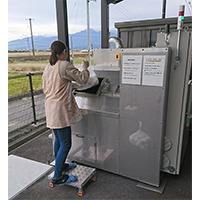The process of brewing, a time-honored tradition that dates back thousands of years, is not just an art but a complex interplay of chemistry. From the selection of grains to the fermentation process, chemistry is integral to transforming basic ingredients into the diverse array of beers enjoyed around the world. This 1000-word article explores the fascinating chemical processes involved in brewing, providing a deeper appreciation for this beloved beverage.
Introduction to Brewing Chemistry
Brewing is a multifaceted process involving biochemistry, microbiology, and chemical engineering. At its core, brewing is about converting the starches in grains into fermentable sugars and then fermenting these sugars into alcohol and other flavor compounds.
The Role of Grains in Brewing
The first step in brewing is selecting the base ingredients, with grains being the primary component. Barley is the most commonly used grain, although wheat, corn, and rye are also popular.
- Malting: Grains are malted to convert the stored starches into fermentable sugars. Malting involves soaking the grains in water to trigger germination, followed by drying and roasting. The roasting level impacts the color and flavor of the beer, ranging from light and sweet to dark and bitter.
- Mashing: The malted grains are then mashed, a process of mixing them with hot water. This activates enzymes in the grains that break down the starches into sugars, primarily maltose.
The Chemistry of Mashing
Mashing is a critical step where complex carbohydrates are broken down into simpler sugars that can be fermented by yeast. Enzymes like alpha and beta amylases play a key role here. The temperature and pH of the mash are carefully controlled to optimize these enzymatic reactions.
Hops and Bitterness
Hops, the flowers of the hop plant, are added to the brew for flavor, aroma, and bitterness. They contain compounds like alpha acids, which are not very soluble in water but are isomerized during boiling to produce iso-alpha acids, responsible for the beer’s bitterness. Hops also contribute essential oils that add to the aroma profile of the beer.
The Boiling Process
Boiling the wort (the liquid extracted from the mashing process) serves several purposes:
- Sterilization: It kills any unwanted bacteria.
- Evaporation of Unwanted Flavors: Certain compounds that can cause off-flavors are evaporated.
- Extraction of Hop Compounds: It extracts bitterness, flavor, and aroma compounds from the hops.
Fermentation: The Heart of Brewing
Fermentation is where the real magic happens, turning the sweet wort into beer:
- Yeast and Fermentation: Yeast, specifically Saccharomyces cerevisiae for ales and Saccharomyces pastorianus for lagers, is added to the wort. Yeast consumes the sugars, primarily glucose and maltose, producing ethanol and carbon dioxide in the process.
- By-Products of Fermentation: Besides alcohol and CO2, yeast produces various by-products, including esters, phenols, and fusel alcohols, which contribute significantly to the flavor and aroma of the beer.
The Role of Temperature in Fermentation
The temperature during fermentation affects the activity of the yeast and the flavor profile of the beer:
- Ales vs. Lagers: Ales are fermented at warmer temperatures, leading to faster fermentation and a more robust flavor profile. Lagers are fermented at cooler temperatures, resulting in a slower, more controlled process and a cleaner taste.
Carbonation: Adding the Fizz
Carbonation in beer can be achieved naturally through the carbon dioxide produced during fermentation or artificially by adding carbon dioxide before packaging. The level of carbonation affects the mouthfeel and overall perception of the beer.
Maturation and Conditioning
After fermentation, the beer is often matured or conditioned, which can take place in tanks or barrels and may last from a few weeks to several months. This process allows flavors to meld and mature, and unwanted by-products to settle or be removed.











